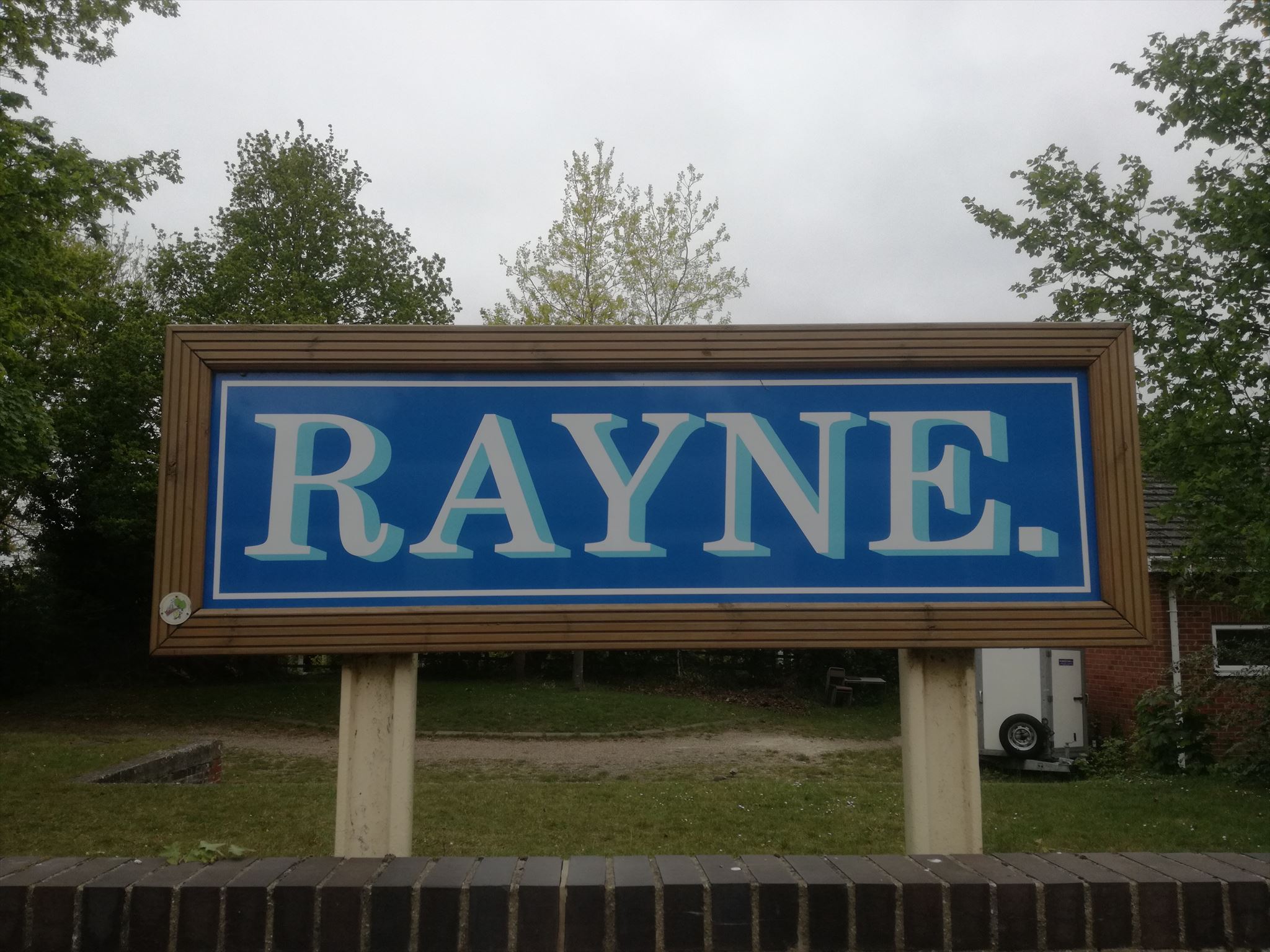About SideTracked Caches
This cache belongs to the SideTracked series. It is not designed to take you to a magical place with a breath taking view. Its a distraction for the weary traveller, but anyone else can go and find it too. More Information can be found at the SideTracked Website

Rayne Station was on the down side of the line with substantial brick buildings comprising station masters house, booking office, waiting room, porters room, lamp room and toilets. Initially the station didn't handle goods traffic but by the turn of the 20th century a small yard had opened accessed from a shunting spur. In the early years of the 20th century the yards was expanded with an additional siding running through a large brick goods shed. A shunting spur gave access to the goods yard with a goods shed. The yard handled a full range of goods traffic and had a cattle dock and coal yard. There was a signal box on the up side of the line; this was provided when the goods yard first opened..
By 1860 most of the rail network was in place, leaving only the gaps between main line stations to be filled. Central and West Essex, a predominantly rural area, had been largely ignored during the initial development because it wasn't considered a viable proposition.

In 1859 an unexpected proposal was submitted to Eastern Counties Railway by a group of Hertfordshire businessmen who were anxious to obtain easy transport for malt and barley from towns and villages in West Essex. Their proposal was for a railway line, 18 miles long, linking the towns of Bishop's Stortford, Dunmow and Braintree.
The first turf was ceremonially cut at Dunmow on the 24 February 1864 and contractors began work constructing the line. Virtually the entire length of the branch line's 18 mile route was single track, except at Dunmow and one or two other stations where dual track allowed trains to pass each other. The line was finally opened for passenger use on 22 February 1869.

Rayne station September 1968. The station closed to all goods traffic in December 1964 but the line was still used for freight until 1971.
When the GER finally amalgamated with the London & North Eastern Railway (LNER) on 1 January 1923, the new company made every effort to increase passenger traffic on the branch line by doubling the initial three passenger trains a day running in each direction, to six. But all to no avail. It was still the carriage of freight that supplied the revenue.

1921 Ordnance survey map.
During the Second World War the line was used to transport thousands of tons of rubble for the construction of Saling airfield, 5 miles from Braintree and, later, when it became operational, massive loads of bombs were carried to the same destination under cover of darkness. The United States Air Force bases at Stansted and Easton Lodge were also regularly supplied with armaments and stores arriving via Bishop's Stortford and Takeley station. After the invasion of Europe in June 1944 the line was used by ambulance trains to bring back wounded soldiers.

After the war the public's use of motor cars and competition from bus transport increased, the passenger service between Bishop's Stortford and Braintree ran virtually empty and inevitably, closure of the line for passenger traffic was announced. Despite public protests, the last train to run between the two towns was on 1 March 1952.

By the end of 1971 all freight traffic had ceased, and on 27 July 1972 a final enthusiast's trip ran from Bishop's Stortford to Easton Lodge and back. By the autumn of that year most of the track had been taken up, apart from the last mile out of Bishop's Stortford. British Rail were considering the possible role this section of line might play in carrying additional traffic to a growing Stansted Airport, but proposals came to nothing and in 1974 the remaining track was removed.
Information for this page was sourced from Disused Railway Stations
Now for the information gathering.
Have a good look around the coach.
Northings from the cache page location minus (MPH + ETH).
The Carriage was opened on B5th July B01A.
Eastings from the cache page location minus (AB).
You should now have a short walk to find the hide.